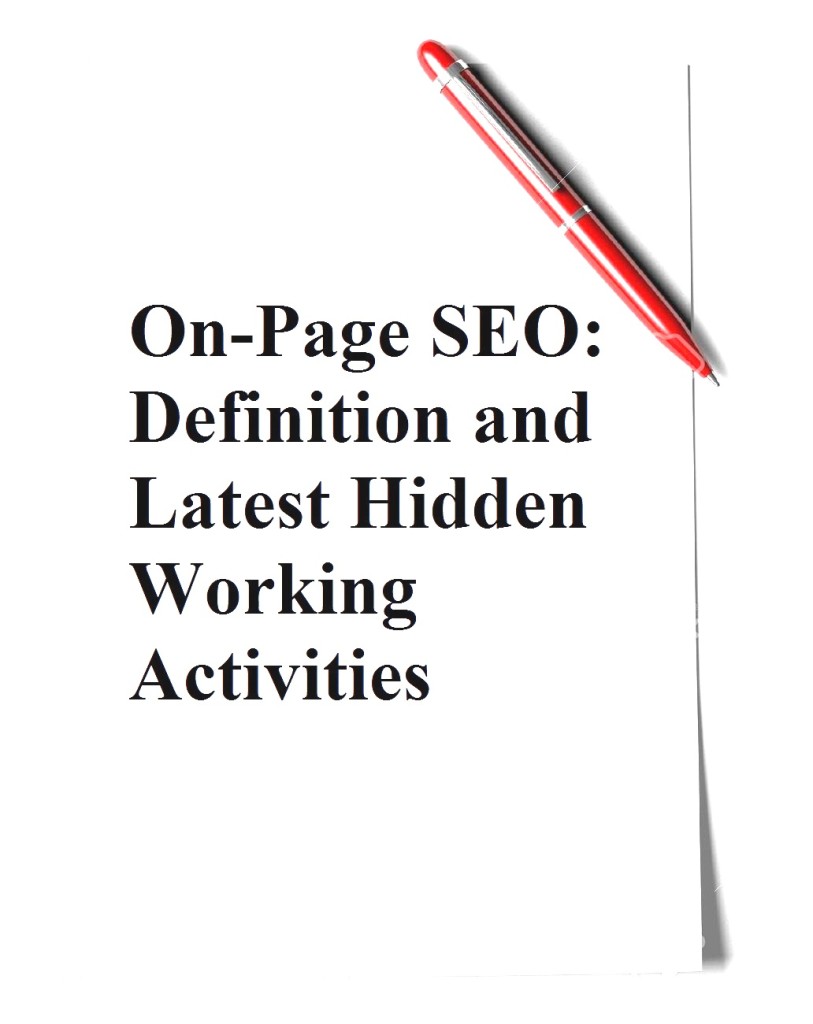What is On-Page SEO
The On-Page SEO may be defining as a process of content optimizing inside a website or blog. This process directly affects your site worth in search engines record. This process is take place by making the content search engine friendly inside a blog.
More is your site’s content search engine friendly, more strong will your On-Page SEO. That’s why if you want to make your On-Page SEO better and strong then you need to perform effectively some On-Page SEO activities. These Activities are as following given below.
Most Important On-Page SEO Latest Hidden Working Activities
Post Title
This is very first and important factor in On-Page SEO process. It come into view as the blue, bolded, underlined text on a Google search results page, and also on the top left the web browser bar.
The Post title is very first factor which noticed by the search engine’s crawler. That’s it is essential to have a search engine friendly post title.
The Post Title can be search engine friendly by following tips:
• Be under 70 characters with no extra than two long – tail keywords per page title
•The primary keyword should come into view first
• Every keyword phrase should be divided by pipes (|)
• Every page title on your blog must be unique and attractive
• Excluding for your home page along with contact us page, every page title should NOT include your blog name
Meta Description
The Meta description comes into view on a Google search results page under the Post Title. The Meta description help users as well as Crawlers to understand that actually what about is that post.
Search Engine Friendly Meta description strategies:
• Be under 150 characters.
• Include the primary keyword along with at least one secondary keyword.
• Offer a precious, compelling explanation for why someone should visit the web page.
• Include keywords in a conversational layout; don’t just study in keywords for the sake of listing the.
Optimized URLs
If your blog uses query strings for page URLs, this is something you need to appear at as superiority. It’s far better to use a search engine friendly URL structure such as www.worthofblog.com/page-name/ as opposed to www.worthofblog.com/index.php?id=1.
It makes more sense to both users as well as search engines and should be regarded as a main concern.
All the time use hyphens rather than underscores as well as try not to have main pages sitting too many directories deep in your blog.
Don’t forget, but, to implement 301 redirects from the old URL to the new if you do make changes. Otherwise you will see crawl errors pop up in Webmaster Tools as well as users being faced with 404 pages.
The Best practices for URLs include-
• Words separated by hyphens or dashes, keep away from underscores.
• Make it small, under 30 characters in length.
• URLs should contain no more than 3 subdirectories.
• If you’re tiresome to rank for location-based keywords, ensure to include those in your URLs.
Heading Tags
The web page should have one H1 heading tag that include the primary keyword, as well as should bring into line with the page title and the URL or the page. This H1 tag should come into view at the top of the page along with should be the first thing people or visitor see when they arrive on a page.
Page Content
Use your primary keyword a few times during the page’s article. Don’t over think keyword density or placement, you should reveal them naturally. Try to bold or underline the Targeted keyword at least once. This has an effect on how important the keyword is to the page. Also reveal the secondary keywords when you can.
Image ALT Tags
The image ALT tags are still significant for SEO because crawlers are blind and they can only read the text. So alt text helps the search engines to recognize the image content and increases a possibility to rank the images in Google Image Search.
The image ALT tags should include your targeted keywords as well as be sure that your image ALT tags are exceedingly descriptive.
Inbound and Outbound Links
The inbound and outbound links play major role to make your ON-Page SEO improved and strong. So use at-least one each link in a post that relevant to the post.
Website Usability and User Experience
Now User Experience is also a ranking thing! The search engines are all the time trying to give the best search results for the searchers. The search engines also have a visible idea on which kind of web-pages satisfy the searchers as well as how people engage with the web pages.
A great user experience means the blog is:
• Easy to understand, use as well as navigate
• Loading speedily on your device in any web browser
• Delivering high quality and useful and helpful content
• Visually eye-catching designed
• Keep away from Using Pop-ups
• Keep away from using long sentences and paragraphs
• Use headings as well as break up your long content
• Focus on text formatting- use bold, underlines, italics as well as bulleted lists
Google observe what we search, click, visit in return along with learns what we resembling. Google’s Panda updates are punishing the blog or websites which don’t meet the crucial standards relating to content, design, relevance also speed.
These were some activities of On-Page SEO and definition as well .I hope this was helpful for you.
